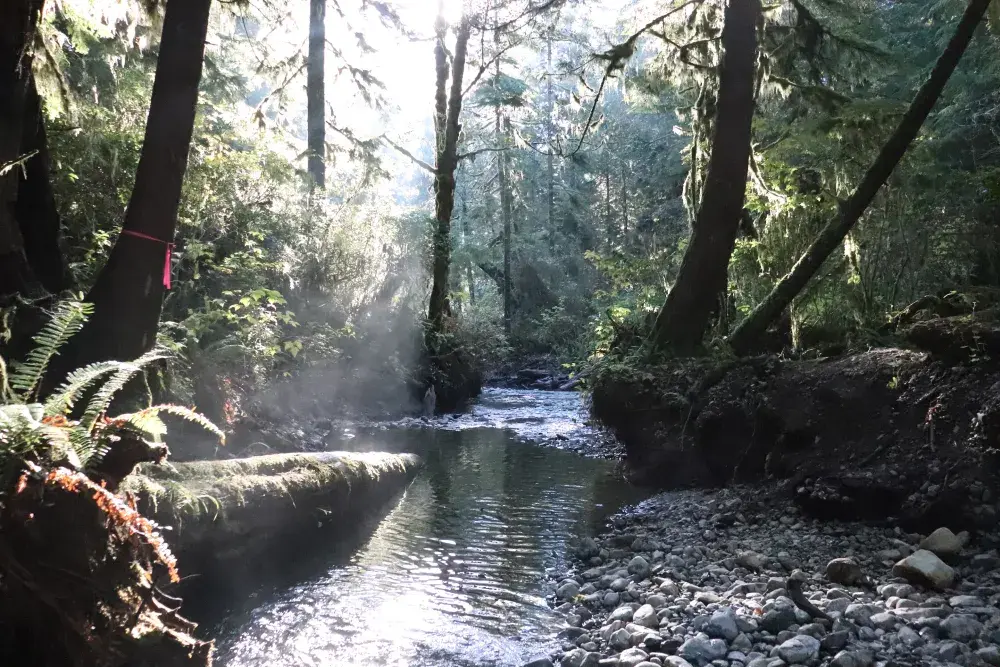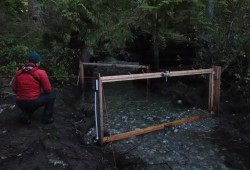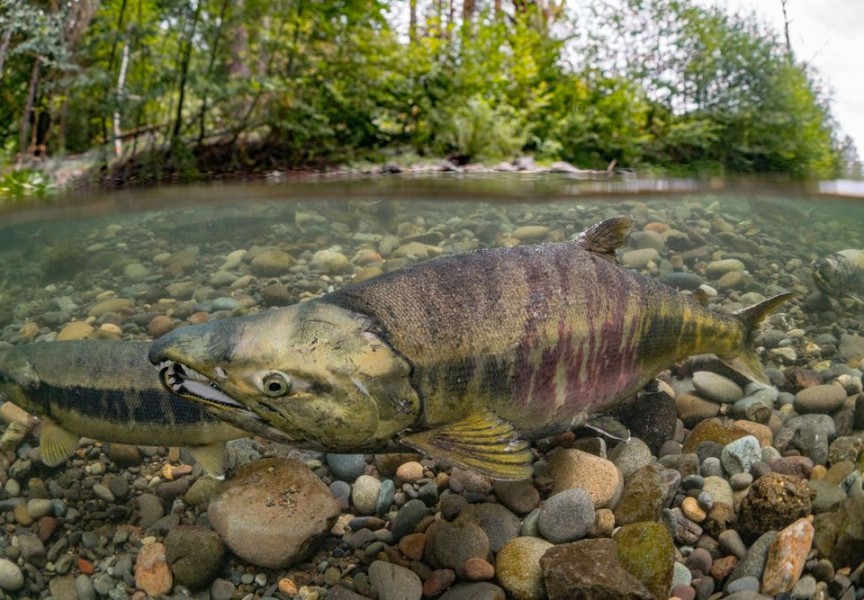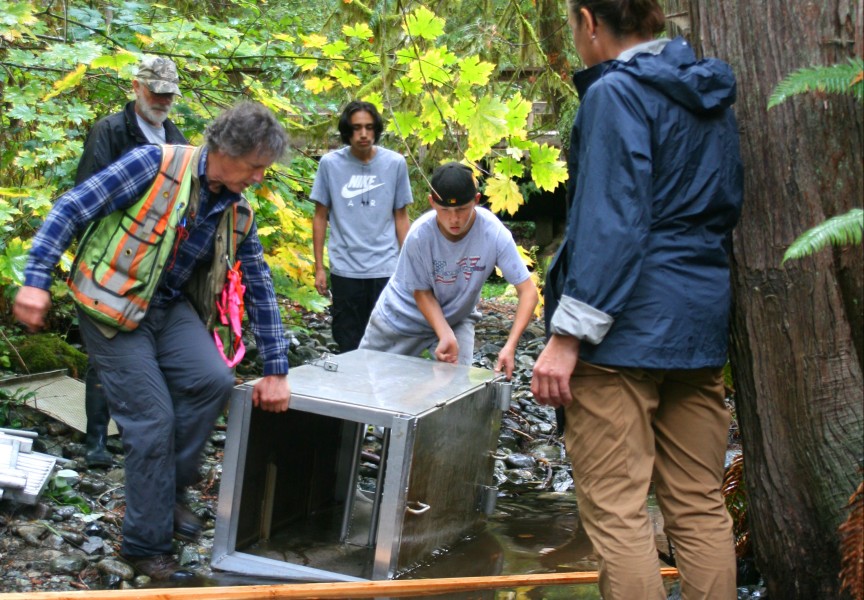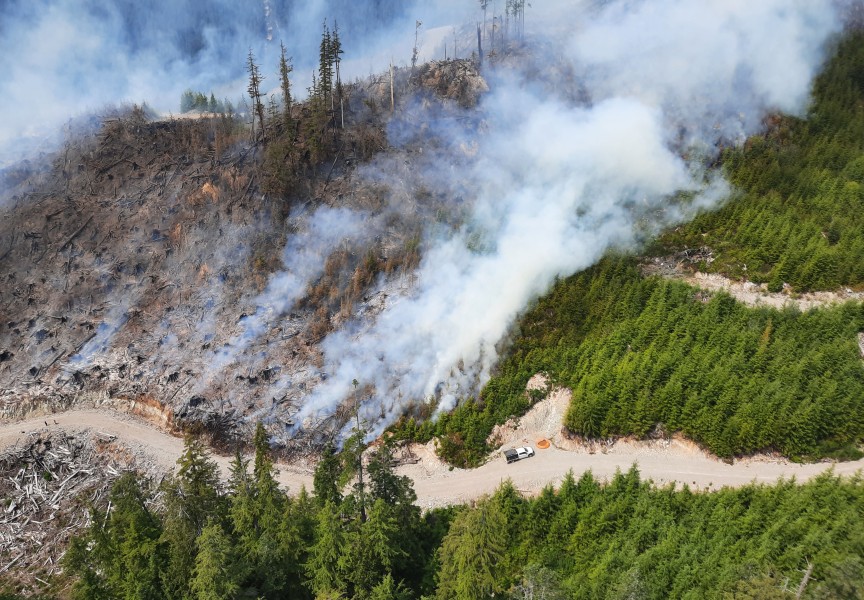The Doobah Creek watershed, an area ravaged by industrial logging, can now begin its healing journey with $852,000 in federal funds to support restoration work over the next four years.
Located on the west coast of Vancouver Island in Ditidaht First Nation’s territory, about 92 kilometres southwest of Port Alberni via the Bamfield Road, the entire headwaters of the Doobah Creek were logged off multiple times — a poor industrial approach which annihilated fish spawning habitat. Forty years later, the Ditidaht people are starting to rebuild.
“Basically, we’re trying to save all our fish,” said Ditidaht’s natural resource manager Paul Sieber.
The First Nation’s restoration plan includes taking chum from the Hobiton River and rearing them in the Doobah watershed. In the early 1970s a grassroots environmental campaign saved three lakes, Hobiton, Squalicum and Tsusiat, from being logged. By the mid-1980s the three lakes or “Nitinat Triangle” was formally added to the Pacific Rim National Park Reserve (PRNPR), and travelling from lake to lake is considered a bucket list adventure for canoeists.
“Hobiton River flows out of Nitinaht Triangle into Nitinaht Lake. That upper watershed is in the park, so it’s never been logged. We have viable runs in there of wild chum, steelhead and coho that still go spawn there,” said Sieber.
Ditidaht has hired veteran biologist Mike Wright and his team at M.C. Wright and Associates Ltd. to work towards restoring Doobah Creek watershed. Most recently, M.C. Wright helped with the Cheewaht Lake Restoration project. Fish habitat around Cheewaht Lake, while located within the boundaries of the PRNPR, was still impacted by nearby forestry activity due to log jams and sediment flow. Since the restoration work on Cheewaht started about three years ago, Sieber says it’s “helped greatly”, but any concrete results will be determined this fall, four years after the restoration began.
“We just keep monitoring. Thank God (the fish) are coming back,” said Sieber. “The provincial and federal government, they are reacting way too late. There is a lot of stewardship funding coming up, but it’s not enough. It’s not just our nation.”
He went on to tell the Ha-Shilth-Sa that there needs to be a more permanent funding stream established.
“We will still need funding for future monitoring and hatchery rearing,” said Sieber. “We know (restoration) is long-term and we have to continually ask the federal government for funding.”
Funding for Doobah Creek watershed is one of four projects in B.C. to receive a portion of about $9.3 million in federal funds under Canada’s Oceans Protection Plan, Aquatic Ecosystems Restoration Fund (AERF). The other projects include: enhancing estuarine resilience for salmon in the Salish Sea by SeaChange Marine Conservation Society, managing and restoring a historic marine-based log handling site in Haida Gwaii and culturing giant and bull kelp by the Kelp Rescue Initiative. All four projects were funded over a four-year term.
“The Government of Canada is committed to taking action to restore and safeguard the health of our ocean and freshwater ecosystems,” wrote Diane Lebouthillier, minister of Fisheries, Oceans and the Canadian Coast Guard, in a July 9 media release. “We are proud to help fund the work of these recipients in restoring and enhancing priority coastal and upstream aquatic areas. Working together, we can enhance our abilities to combat climate change through aquatic restoration activities.”
RELATED: The keepers of Cheewaht: Restoring an ecosystem for generations to come

